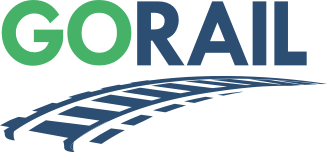Washington, D.C. — It’s once again September, a good time to focus on public safety as kids head back to school and more drivers crowd the roads post summer-vacation. This week marks U.S. Rail Safety Week (Sept. 20-26), a national event to raise awareness about safety near railroad tracks. It’s led by Operation Lifesaver, Inc. (OLI) in partnership with railroads, the U.S. Department of Transportation, and state and local law enforcement and safety organizations.
Nationwide there are nearly 140,000 miles of rail track. These lines are important economic corridors, connecting people, businesses and producers across the U.S. and beyond. As you read this, freight railroads are working to help manufacturers gear up for the holiday season.

But the flip side of rail’s productivity and efficiency is that railroad tracks can be dangerous for trespassers, distracted drivers, cyclists and others who don’t fully grasp the stakes. We put together some numbers on rail safety—both sobering statistics and helpful resources for staying safe near the tracks.
- Over 200,000. The approximate number of highway-rail grade crossings in the United States.
- 18 football fields. The distance it takes the average freight train traveling at 55 mph to stop—more than a mile. Trains cannot stop quickly enough to avoid a collision.
- Every 3 hours. How often a person or vehicle is hit by a train in the U.S.
- 95%. The percentage of all rail-related deaths that involve drivers going through a crossing or a person on the tracks.
- 1,900. The number of highway-rail collisions across the U.S. in 2020. This sadly included 198 fatalities.
- 84%. The percentage decrease in collisions since 1972 when OLI began its important public education campaign.
- Section 130. A federal program, launched in 1987, that provides funds to eliminate hazards at highway-rail grade crossings. Last year the program allocated $245 million to projects like installing new active warning devices and improving crossing surfaces. Freight railroads have partnered with groups like the National Association of Counties to support expanded funding opportunities for these projects.
- $845 million. The amount included per year for highway-rail grade crossing safety and improvement projects in the Infrastructure Investment and Jobs Act, which railroads support.
- K-8. The grade levels for which OLI offers educational materials on rail safety.
- FOUR. Learn and pass on these FOUR tips for staying safe near the tracks: 1. Never try to beat a train; 2. Always expect a train; 3. Look and listen for trains as you approach a crossing, 4. Trains cannot stop quickly.
Won’t you join us in our goal to stop track tragedies?


